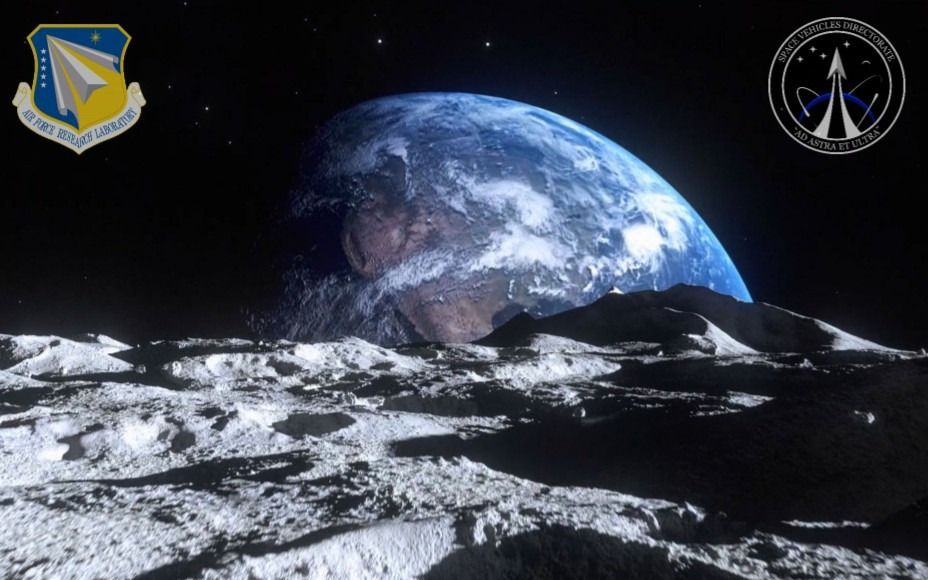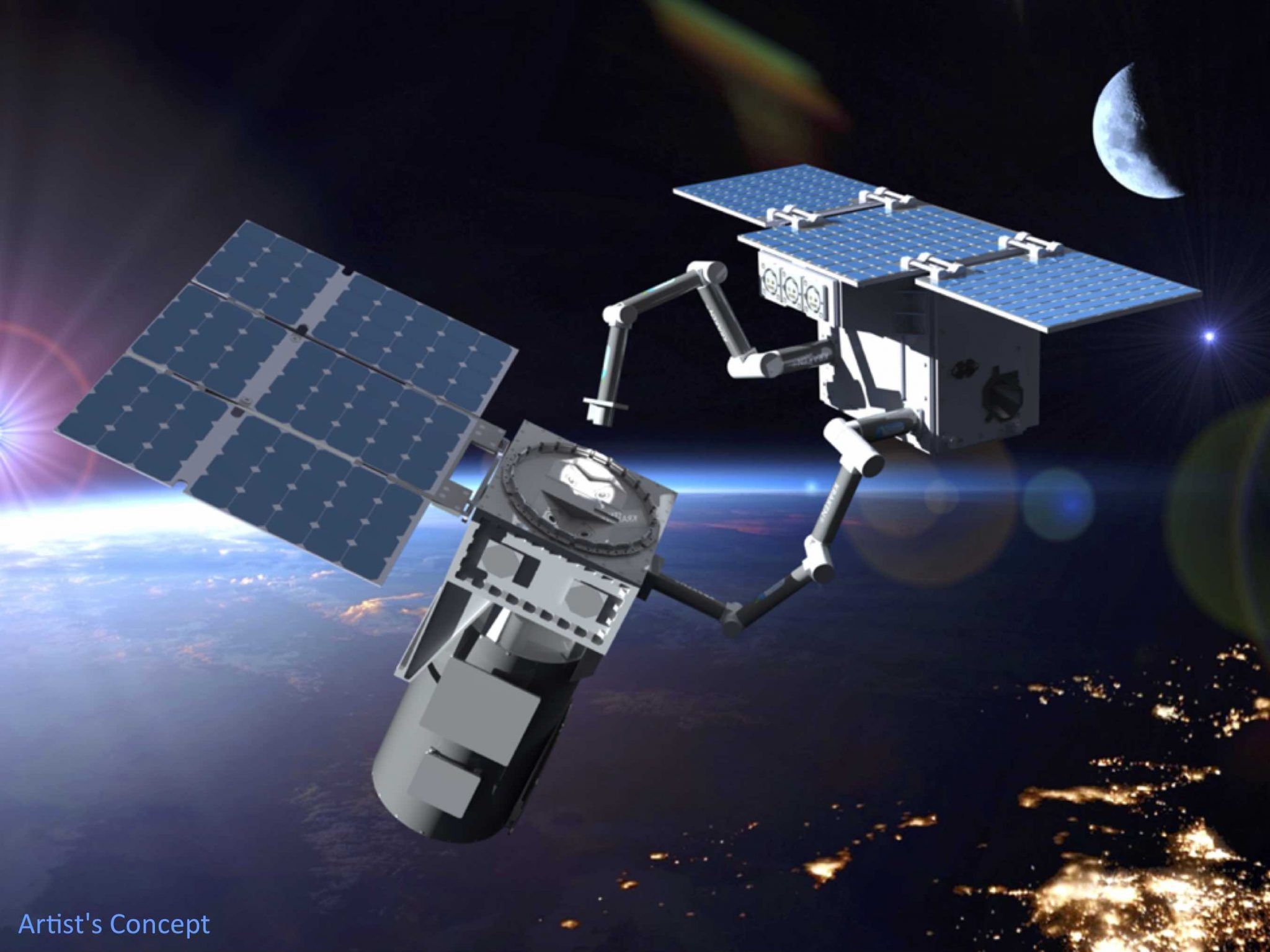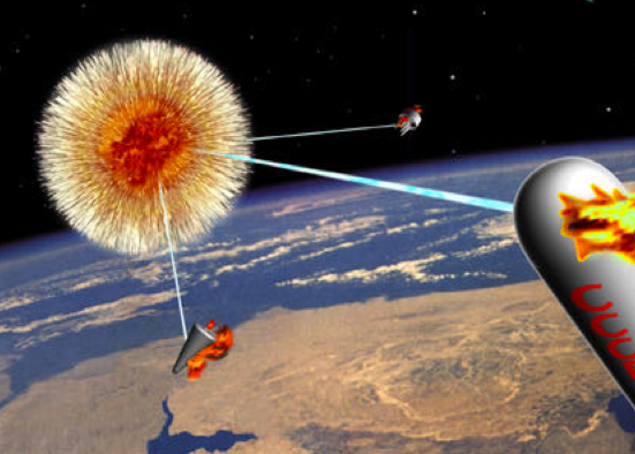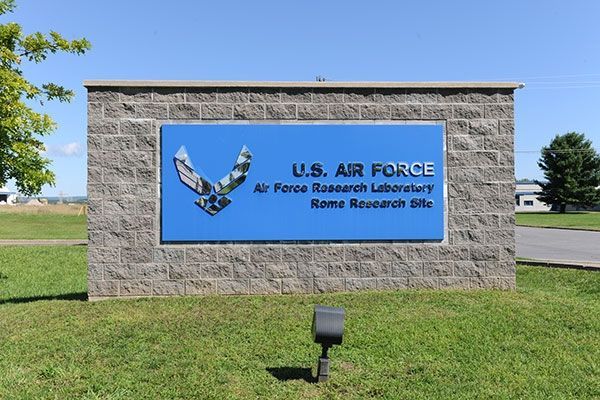Space Force’s Task to Protect and Defend U.S. Interests Between Here and the Moon
Article by Lauren Fruen June 28 2021 (the-sun.com)
• On July 23rd, the Air Force Research Laboratory (AFRL) released a 23-page document entitled: “A Primer on Cislunar Space”, referring to the area between the Earth and the Moon. The director of AFRL’s Space Vehicles Directorate, Col. Eric Felt, states: “As commerce extends to the Moon and beyond, it is vital we understand and solve those unique challenges so that we can provide space domain awareness and security.” With the Moon more than 238,000 miles from Earth, countries are scrambling to fill the gap.
• The US Space Force is tasked with defending and protecting U.S. interests in space. When Space Force was established by President Trump in December 2019 as a ‘separate but equal’ branch of the US military, the limits of protected space was in near-Earth geostationary range at 22,236 miles. “With new US public and private sector operations extending into cislunar space, the reach of USSF’s sphere of interest will extend to 272,000 miles and beyond – more than a tenfold increase in range and 1,000-fold expansion in service volume,” reads the report.
• The report adds: “As USSF organizes, trains, and equips to provide the resources necessary to protect and defend vital US interests in and beyond Earth-orbit, new collaborations will be key to operating safely and securely on these distant frontiers.” The report is “targeted at military space professionals who will answer the call to develop plans, capabilities, expertise, and operational concepts.”
• When Space Force was launched, Donald Trump said at the time: “When it comes to defending America, it is not enough to merely have an American presence in space. We must have American dominance in space.
• Earlier this month, Air Force Colonel Eric Felt got straight to the point: “Space war is going to look a lot like the Cold War in a couple of different ways. First of all, we hope nobody’s actually exchanging destructive weapons with each other, and that we don’t just hope, but we take active actions to deter that from happening. The nature of conflict in space is that there is an offensive advantage, or a ‘first-mover’ advantage, in that it is a lot easier to attack somebody else than to defend your own stuff. And we’ve seen that before—that’s the same as with…nuclear weapons.”

An Air Force Research Laboratory report details how the Earth’s only natural satellite – and the space around it – could become a new military frontier, SpaceNews reports.
– and the space around it – could become a new military frontier, SpaceNews reports.
The 23-page document, “A Primer on Cislunar Space”, was published by the Air Force Research Laboratory just two days before the US government admitted they could not explain 144 sightings of flying objects.

The report explains it “is targeted at military space professionals who will answer the call to develop plans, capabilities, expertise, and operational concepts.”
It adds: “When established in December 2019, USSF [United States Space Force] was tasked with defending and protecting U.S. interests in space.
“Until now, the limits of that mission have been in near Earth, out to approximately geostationary range (22,236 miles). ”
 The report adds: “With new US public and private sector operations extending into cislunar space, the reach of USSF’s sphere of interest will extend to 272,000 miles and beyond – more than a tenfold increase in range and 1,000-fold expansion in service volume.”
The report adds: “With new US public and private sector operations extending into cislunar space, the reach of USSF’s sphere of interest will extend to 272,000 miles and beyond – more than a tenfold increase in range and 1,000-fold expansion in service volume.”
Cislunar space is the space between Earth and the moon.
The report adds: “As USSF organizes, trains, and equips to provide the resources necessary to protect and defend vital US interests in and beyond Earth-orbit, new collaborations will be key to operating safely and securely on these distant frontiers.”
FAIR USE NOTICE: This page contains copyrighted material the use of which has not been specifically authorized by the copyright owner. ExoNews.org distributes this material for the purpose of news reporting, educational research, comment and criticism, constituting Fair Use under 17 U.S.C § 107. Please contact the Editor at ExoNews with any copyright issue.


 WASHINGTON — The Air Force Research Laboratory’s Space Vehicles Directorate
WASHINGTON — The Air Force Research Laboratory’s Space Vehicles Directorate
 Felt said. “Our job in the SWORD lab will be to continue to develop resilient and innovative technologies that will protect our nation and allies from threats by our adversaries. Recognizing that space is an emerging domain for warfighting, we want to make sure there is never a war in space.”
Felt said. “Our job in the SWORD lab will be to continue to develop resilient and innovative technologies that will protect our nation and allies from threats by our adversaries. Recognizing that space is an emerging domain for warfighting, we want to make sure there is never a war in space.”




 The report “State of the Space Industrial Base,” released last week by the Defense Innovation Unit, the U.S. Space Force, and the Air Force Research Laboratory, is, in effect, the space annex to the National Security Strategy of 2017. That document defines Russia and China as strategic adversaries of the United States. “China and Russia challenge American power, influence, and interests, attempting to erode American security and prosperity,” it claims on page 2. That outlook is extended directly into the space domain by this report, writes Gen. John Raymond, chief of the U.S. Space Force, in the foreword to the document.
The report “State of the Space Industrial Base,” released last week by the Defense Innovation Unit, the U.S. Space Force, and the Air Force Research Laboratory, is, in effect, the space annex to the National Security Strategy of 2017. That document defines Russia and China as strategic adversaries of the United States. “China and Russia challenge American power, influence, and interests, attempting to erode American security and prosperity,” it claims on page 2. That outlook is extended directly into the space domain by this report, writes Gen. John Raymond, chief of the U.S. Space Force, in the foreword to the document.
 In the introduction, the report cites an assessment produced by Air Force Space Command in 2019 entitled “The Future of Space 2060 and Implications for U.S. Strategy,” which itself was the product of yet another workshop. That report, among other things, complains that “China is executing a long-term civil, commercial, and military strategy to explore and economically develop the cislunar domain with the explicit aim of displacing the U.S. as the leading space power. Other nations are developing similar national strategies.”
In the introduction, the report cites an assessment produced by Air Force Space Command in 2019 entitled “The Future of Space 2060 and Implications for U.S. Strategy,” which itself was the product of yet another workshop. That report, among other things, complains that “China is executing a long-term civil, commercial, and military strategy to explore and economically develop the cislunar domain with the explicit aim of displacing the U.S. as the leading space power. Other nations are developing similar national strategies.”




